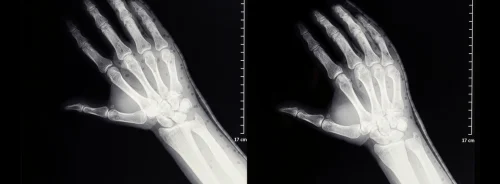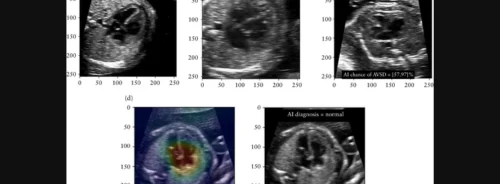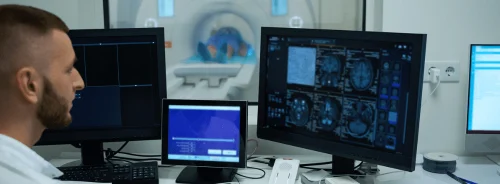HealthManagement, Volume 6 - Issue 5, 2006
Key Role of the COR
Author
IlzeRaath
Editor European Affairs
The Committee of the Regions (COR) was created by the Maastricht Treaty in 1992 and provides a forum for local and regional authorities on issues affecting them. It is an advisory body that ensures public authorities are consulted on EU proposals of direct interest to them, especially as they are often responsible for implementing these policies. Its work is organised through six commissions that examine the details of proposals and then draw up a draft opinion, which highlights where there is agreement with the European Commission's proposals, and where changes are needed.
Members of the COR
The COR is made up of 317 members and 317 alternate members, representing local and regional government from the 25 Member States, as specified by the Maastricht Treaty. Consequently, members represent the whole sphere of sub-member state government throughout Europe, including regions, provinces, counties, municipalities and districts. The members and alternate members are appointed for four years by the Council, acting unanimously on proposals from the respective Member States.
Responsibilities of the COR
In 2001, the Treaty of Nice strengthened its democratic legitimacy by introducing the necessity for political responsibility of its members in their capacity as representatives of regional and local authorities. The COR was established to address two main issues. Firstly, seeing that three-quarters of EU legislation is implemented at local or regional level, it would make sense for local and regional representatives to have a say in the development of new EU laws.
Secondly, there were concerns that the public was being left behind as the EU was busy expanding and increasing its power. By involving the elected level of government closest to the citizens, the gap was being closed. The Treaties (Nice and Maastricht) oblige the Commission and Council to consult the COR whenever new proposals are made in areas that have repercussions at regional or local level.
The Treaties set out the following areas:
• Economic and social cohesion
• Trans-European infrastructure networks
• Health
• Education
• Culture
• Employment policy
• Social policy
• Environment
• Vocational training
• Transport
The Commission, Council and European Parliament have the option to consult the COR on issues not covered by the above-mentioned if they see important regional or local implications to a proposal. The COR can also draw up an opinion on its own initiative, which enables it to put issues on the EU agenda.
Organisation and Structure
The constituent bodies of the Committee of the Regions are as follows:
Plenary Assembly
The Committee meets as a Plenary Assembly and its main tasks are: adopting opinions, reports and resolutions, draft estimates of expenditure and revenue of the Committee and the political programme of the Committee; electing all the members of the Bureau; setting up commissions; and adopting and revising the Rules of Procedure of the Committee.
Presidency
The President directs the work of the Committee. The Committee elects the President from among the members for a two-year term.
Bureau
The Plenary Assembly elects the Bureau for two years. It consists of the President, the first Vice-President, one Vice-President per Member State, 25 other members and the chairmen of the political groups (56 members in total). The Bureau is responsible for implementing the COR's political programme.
Commissions
At the beginning of each four-year term, the Plenary Assembly sets up commissions to prepare its work. It decides on the composition and powers of these commissions. The compositions must reflect the national composition of the Committee. The commissions specialise in particular policy areas:
• Commission for Territorial Cohesion Policy (COTER)
• Commission for Economic and Social Policy (ECOS)
• Commission for Sustainable Development (DEVE)
• Commission for Culture and Education (EDUC)
• Commission for Constitutional Affairs and European Governance (CONST)
• Commission for External Relations (RELEX)
The commissions draw up the draft versions of opinions and resolutions which are submitted to the Plenary Assembly for adoption.
Secretariat-General
A Secretariat-General headed by the Secretary-General assists the Committee. The Bureau ensures that the COR and its constituent bodies function efficiently, by helping the members of the Committee in carrying out their duties. It draws up the minutes of the meetings of the Committee’s constituent bodies. The Secretary-General is responsible for giving effect to the decisions taken by the Bureau or the President. In preparation for Bureau decisions, the Secretary-General draws up discussion documents and recommendations for a decision on each item up for discussion.
National Delegations
The members and alternates from each Member State form a national delegation. Each national delegation is responsible for adopting its own internal rules and electing a chairman.
Political Groups
Four political groups are represented in the COR, which reflect the main European political families: the Party of European Socialists (PES), the European People's Party (EPP), the European Liberal Democrat and Reform Party (ALDE), and the European Alliance (EA). These groups provide a forum for Committee members to discuss key political issues and reach common positions.
Interregional Groups
Members and alternates may also form interregional groups.
Execution of Duty
The Committee of the Regions is convened by its President at the request of the Council or the Commission, but it may also meet on its own initiative.
Work of the Commissions
The Bureau assigns requests for opinions (provided for in the annual work programme) as well as requests for opinions on documents not contained in the work programme to the responsible commission. In urgent cases, the President may designate a commission to deal with the specific matter. If the subject of an opinion requires the input from more than one commission, the Bureau designates a lead commission and, where necessary, one or more supplementary commissions.
If the commission concerned cannot draw up a draft opinion by a certain deadline, the Bureau may propose that the Plenary Assembly appoints a rapporteur-general, who submits his draft opinion straight to the Plenary Assembly. Draft resolutions or applications for the drafting of a resolution may be submitted to the Committee by at least 32 members or a political group.
If the Bureau decides that the Committee is to discuss a draft resolution or an application for the drafting of a resolution, it may either put the draft resolution on the Plenary Session preliminary draft agenda or appoint a commission to draw up a draft resolution.
The commissions present their draft opinions before the deadline set by the Bureau. If the commission thinks that a document referred to it by the Bureau has no regional or local interest, or political importance, it may decide not to draw up an opinion.
Plenary Session
The draft opinion (or draft resolution) is debated and voted on during the Plenary Assembly. When a deadline cannot be met under the normal procedure and the commission has adopted its draft opinion unanimously, the President transmits this draft opinion to the Council, Commission and European Parliament for information. The draft opinion is submitted to the following Plenary Session for adoption without amendment.
The Committee’s opinions, as well as any communication related to the use of a simplified procedure or a decision not to draw up an opinion, are sent to the Council, Commission and European Parliament. As in the case of resolutions, they are forwarded by the President.





